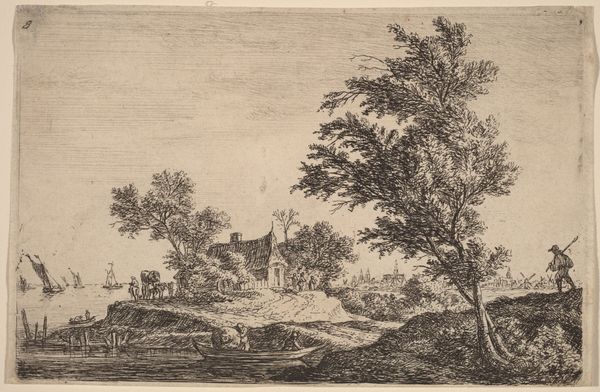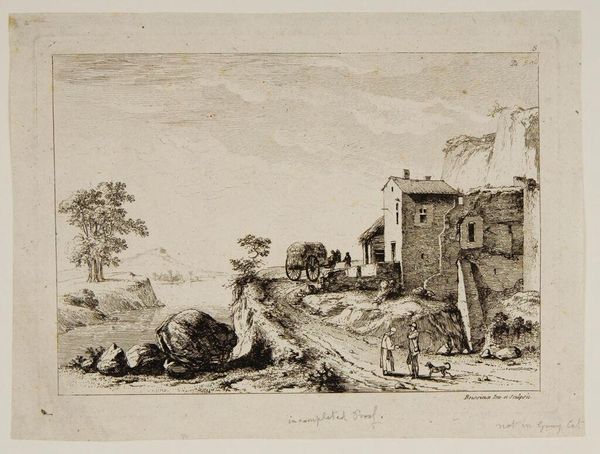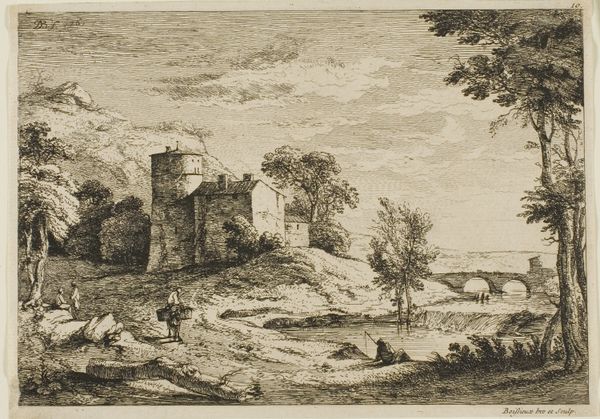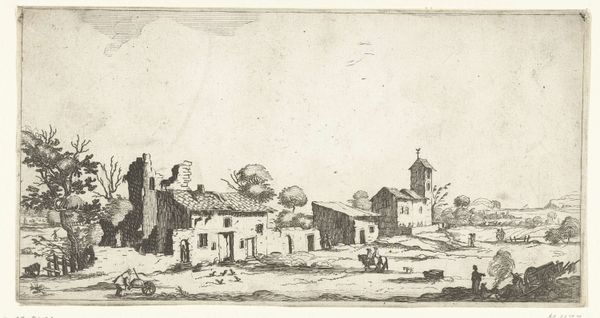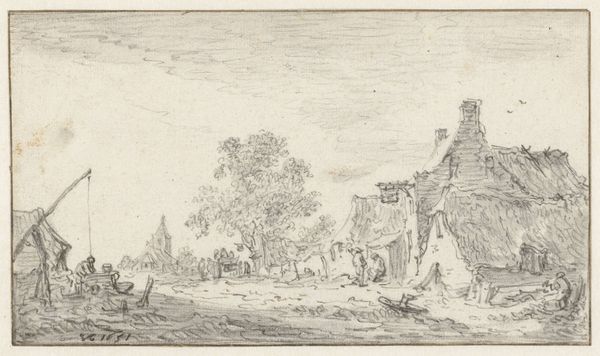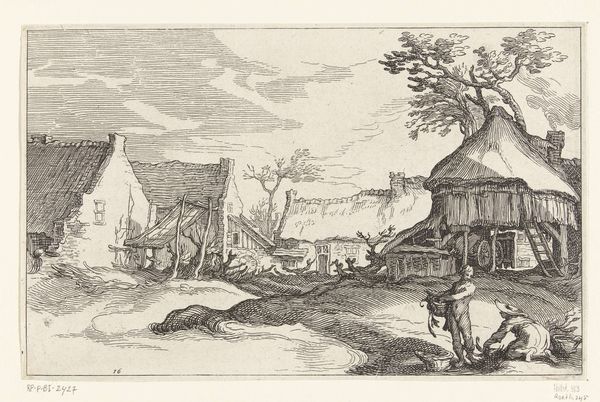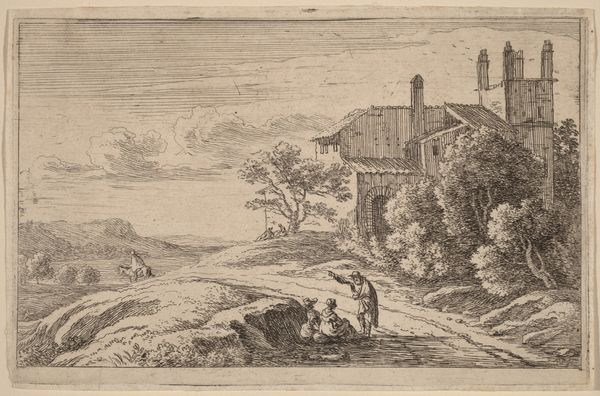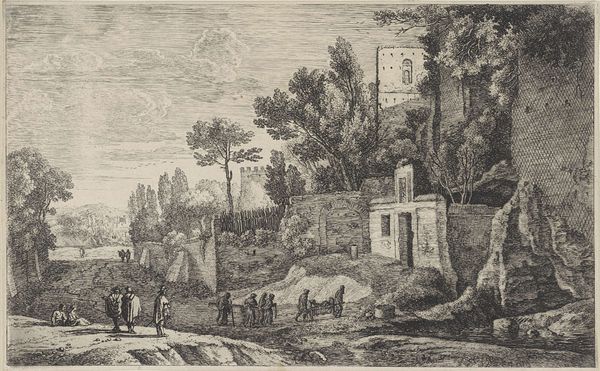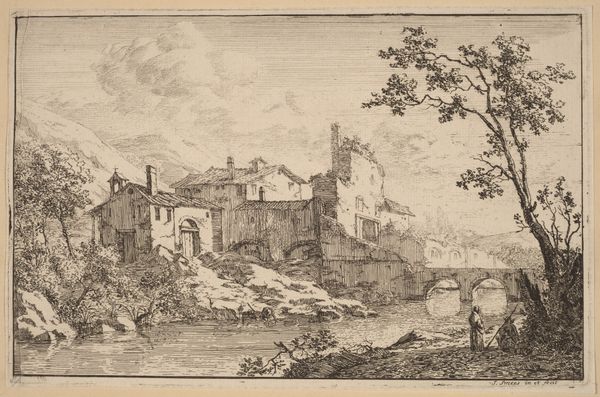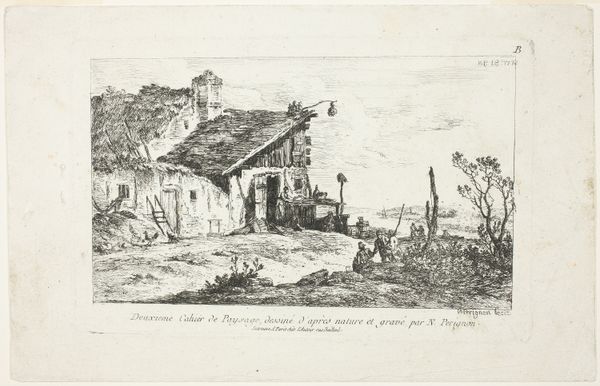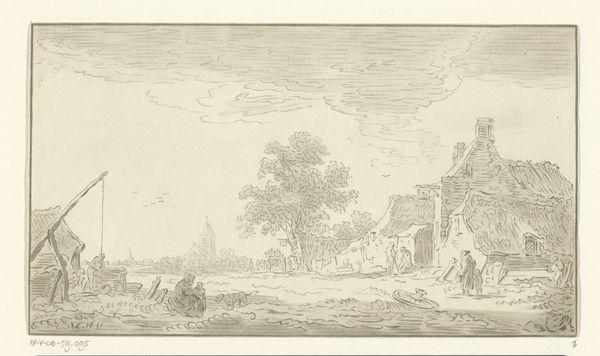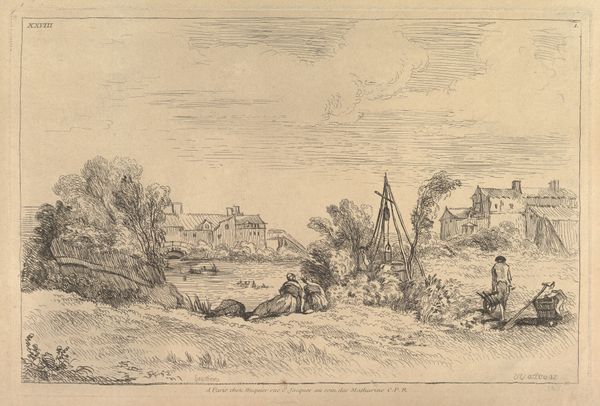
drawing, print, etching, paper
#
drawing
# print
#
etching
#
landscape
#
paper
#
romanticism
Dimensions: 138 × 198 mm (image); 143 × 203 mm (sheet)
Copyright: Public Domain
Jean Jacques de Boissieu created "The Monk and the Hunter" using etching, a printmaking process that relies on acid to ‘bite’ lines into a metal plate. The material quality of the print hinges on this linear vocabulary. Boissieu would have painstakingly drawn through a waxy, acid-resistant ground, exposing the metal beneath. After immersion in acid, the plate is inked, and then printed under great pressure, transferring the image to paper. The result is a delicate, almost fragile depiction of figures within a landscape. Note the way this labor-intensive process lends itself to the image. The fine lines evoke a sense of detail and texture, essential for depicting the various elements of the scene: the rough rocks, the foliage, the figures' clothing. The contrast between the dark lines and the light paper creates depth and atmosphere. Ultimately, understanding the process of etching helps us appreciate the skill and artistry involved in creating this image, and the way material and making contribute to its overall effect.
Comments
No comments
Be the first to comment and join the conversation on the ultimate creative platform.
